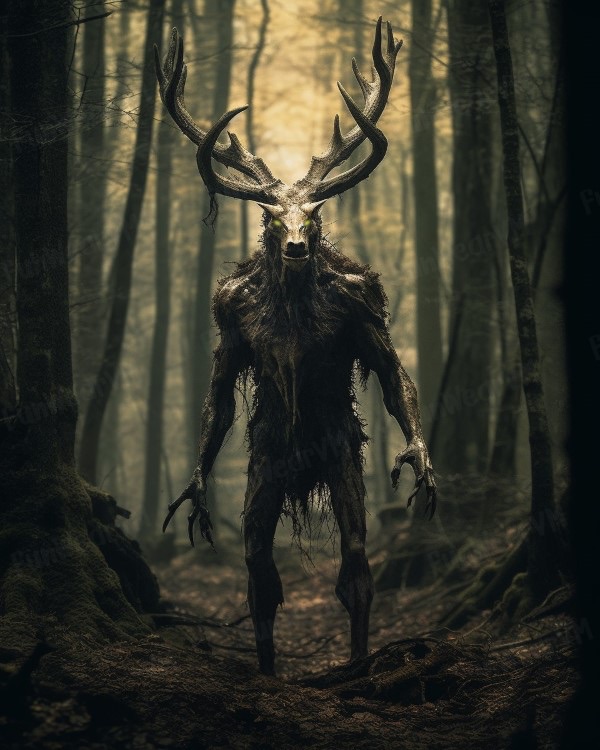What is a Wendigo?
A Wendigo is a mythical creature rooted in the folklore of the Algonquian-speaking tribes of North America, particularly among the Ojibwe, Cree, and other northern indigenous peoples. The Wendigo is often depicted as a malevolent, cannibalistic spirit or monster associated with winter, famine, and insatiable hunger. Here are key aspects of the Wendigo:
Get your dose of History via Email
- Origins and Mythology: The Wendigo originates from the folklore of the Algonquian tribes, where it is considered a spirit that embodies the essence of cold and hunger. It is often linked to stories of human beings who, driven to desperation by extreme hunger, resort to cannibalism and are subsequently transformed into Wendigos.
- Physical Appearance: Descriptions of the Wendigo’s appearance can vary, but it is generally depicted as a gaunt, skeletal figure with decaying skin, glowing eyes, sharp claws, and sometimes antlers or a deer-like skull. It embodies the horror of starvation and the coldness of winter.
- Behavior and Traits: The Wendigo is known for its insatiable hunger for human flesh. Despite eating, it is never satisfied, and this endless craving is a defining characteristic. It is often seen as a symbol of greed and excess.
- Cultural Significance: In Algonquian culture, the Wendigo serves as a cautionary tale against the dangers of isolation, greed, and the breakdown of social taboos, such as cannibalism. It is a representation of the consequences of abandoning humanity and resorting to monstrous behavior.
- Modern Interpretations: The Wendigo has been popularized in modern media, including literature, films, and video games. While these interpretations often take creative liberties, the core elements of the Wendigo as a horrifying, cannibalistic entity remain consistent.
- Psychological Interpretation: The concept of “Wendigo psychosis” is a culture-bound syndrome among the Algonquian people, where individuals develop an intense craving for human flesh and fear of turning into a Wendigo. This reflects the deep cultural fears and taboos surrounding cannibalism.
The Wendigo is a powerful symbol in indigenous folklore, representing both the physical and psychological horrors of hunger, isolation, and moral corruption.
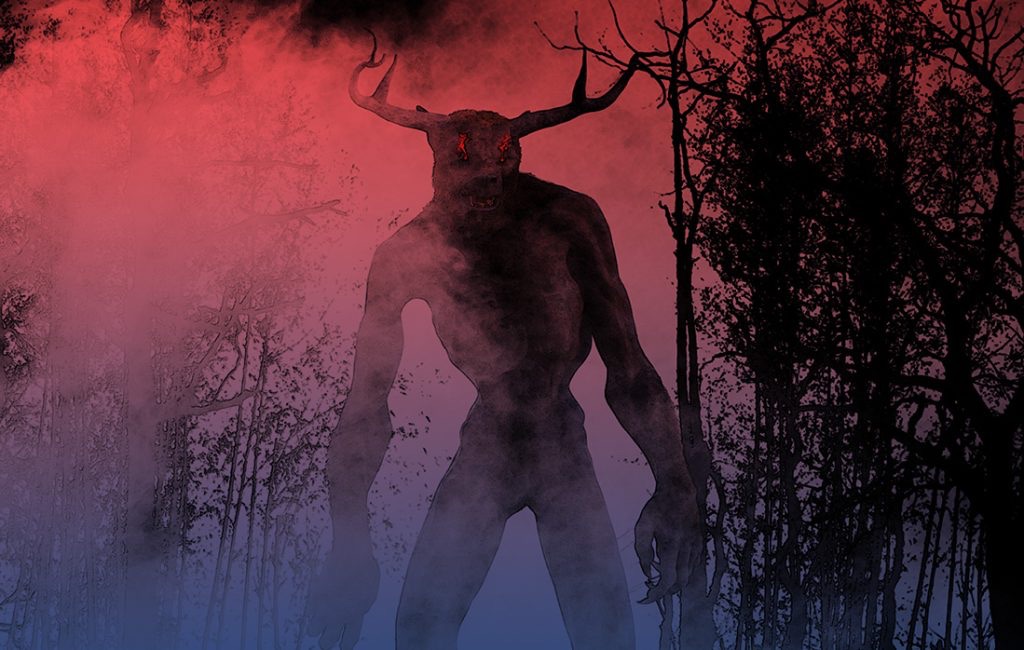
Are Wendigos real?
Wendigos are not real in the sense of being actual, physical creatures. They are mythological beings rooted in the folklore and spiritual beliefs of the Algonquian-speaking tribes of North America, particularly among the Ojibwe, Cree, and other northern indigenous peoples.
Indigenous Roots and the Origins of the Wendigo
At the heart of the legend lies a core of ancient wisdom passed down by Native Americans. The Wendigo origin is entrenched in warnings against gluttony and the importance of community. Fearsome stories of the creature served as a moral compass, teaching the pitfalls of selfishness.
The concept of the insatiable monster took shape in harsh climates, where survival hinged on sharing scarce resources. The Wendigo stories are more than just a chilling account of a man-eating beast; they convey a deep respect for nature’s balance.
Understanding the Wendigo
Defining what this monster is requires a glimpse into the shadows of the human psyche. The creature appears emaciated, with tight, dry skin over its bones. This gives it the appearance of a lifeless body rather than a living being. Its eyes sink deep into their sockets, and it emits an odor of decay.
The wendigo’s insatiable hunger for human flesh is its defining trait. This hunger is said to grow with every meal it consumes, making it forever hungry, the very essence of the word ‘insatiable.’
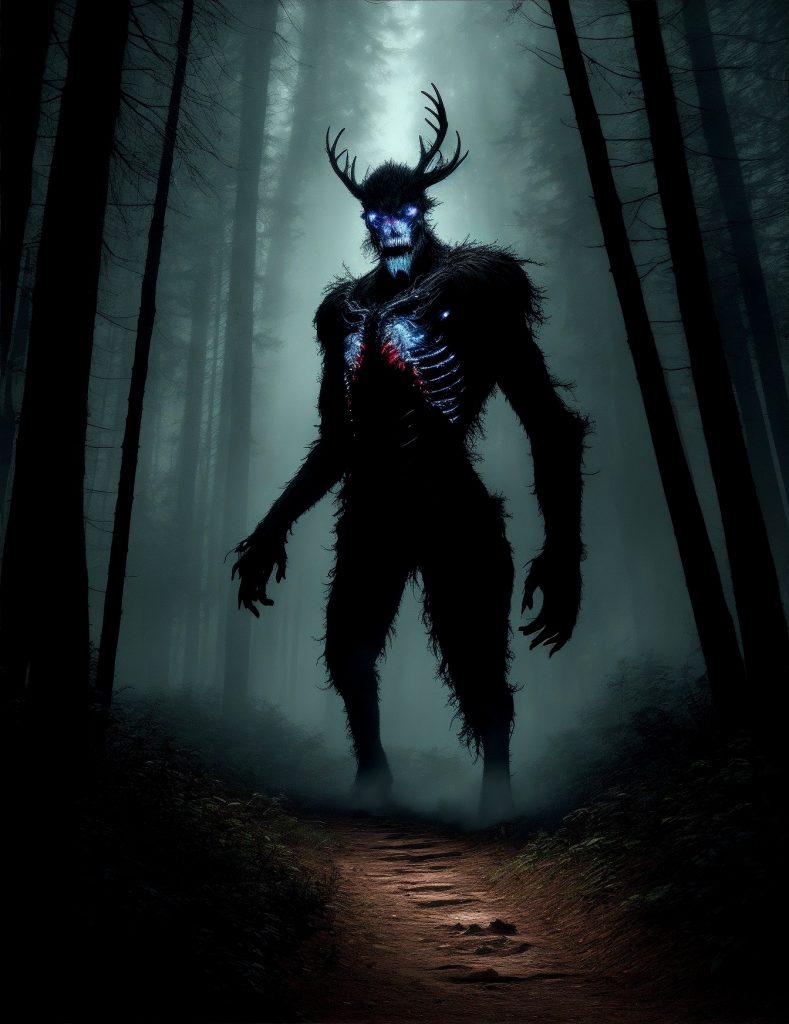
Sightings and Modern Myths
Despite being a myth, reports of wendigo sightings persist, adding a layer of intrigue to the legend. Some claim to have seen it in the woods. However, there are others who believe it is merely a product of people’s imagination or mistaking something else for it.
The wendigo, whether real or not, inspires a connection between old stories and new beliefs. This connection makes people feel amazed and respectful towards the power of storytelling and the mysteries of the world.
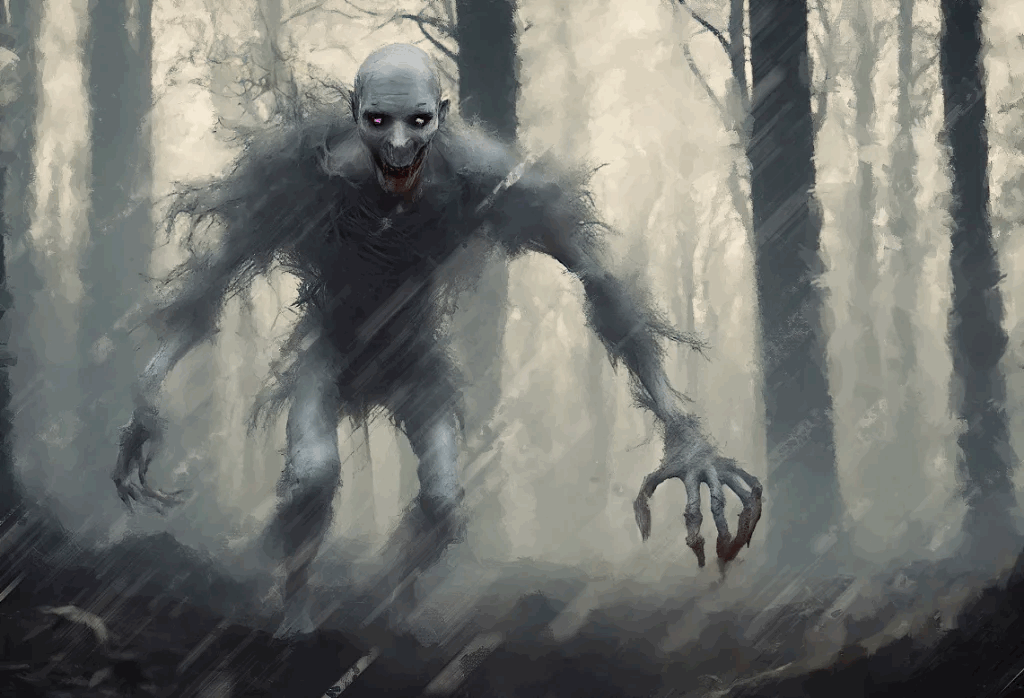
Indigenous Stories
The wendigo has a powerful presence in the tales of the Algonquian tribes. These narratives often served as a tool for imparting crucial social values and survival tactics. The Wendigo story often came with a lesson to reinforce community and cooperation, especially during the unforgiving winter months.
Old people would tell a scary story by the fire. They would use Wendigo as a symbol. The purpose was to remind people of the bad things that happen when they are selfish.
Variations in the Legend
Across tribes, stories of the wendigo adapted to local cultures and environments, each with unique characteristics. These variations provided a complex portrait of the creature, known in some regions as ‘windago,’ ‘wendingo,’ or ‘wendifo.’ Despite differences, the Wendigo warned against excess and symbolized balance between humans and nature. Such narratives reflect not only fears but also philosophies deeply woven into the fabric of these communities.
The Wendigo in Popular Media
Transcending its original cultural context, the Wendigo myth has taken on new life in books, films, and games. Here, artists often portray the creature with a dramatic flair, heightening its horror elements to thrill and terrify audiences. The myth is often used in popular media to demonstrate the continued relevance of old stories. However, in some cases, these stories undergo significant changes that alter their origin, meanings and lessons.
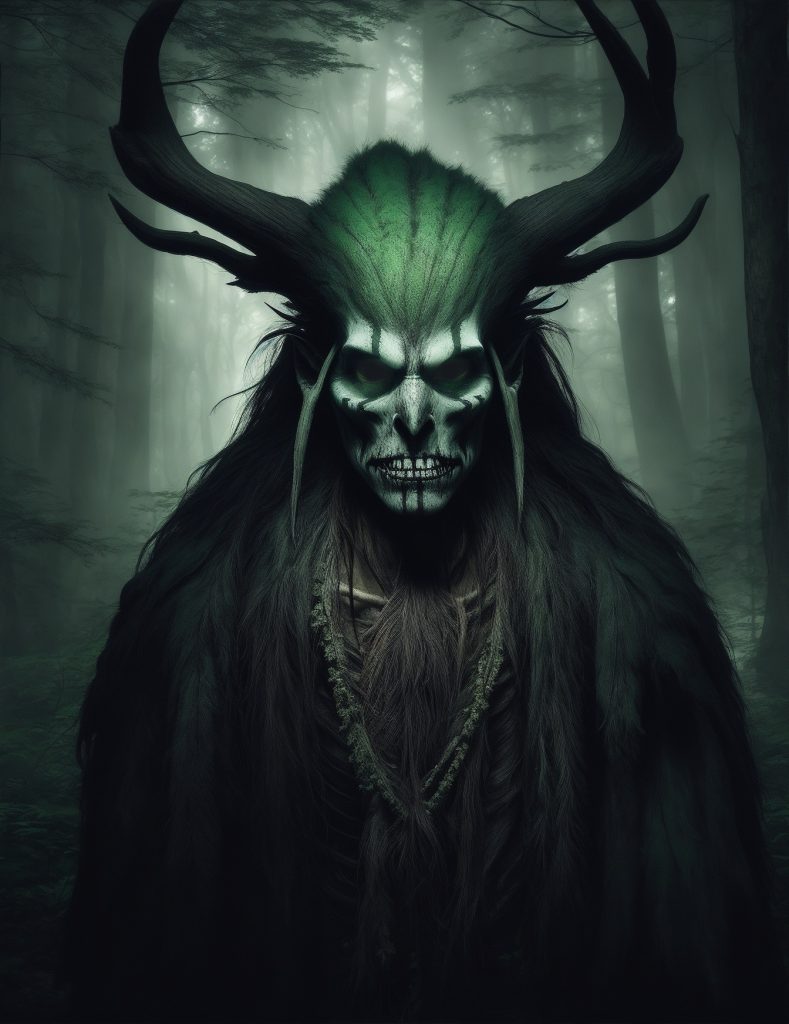
Impact of the Wendigo Myth on Society
The myth has not only lived on through stories but has also penetrated academic discussions. It serves as a symbol in ecological debates, representing the destructive nature of humanity’s greed towards the environment. In psychoanalysis, the wendigo represents the never-ending greed that consumes people, no matter how much they have. Thus, the it extends beyond folklore, becoming a metaphor for societal and individual excesses.
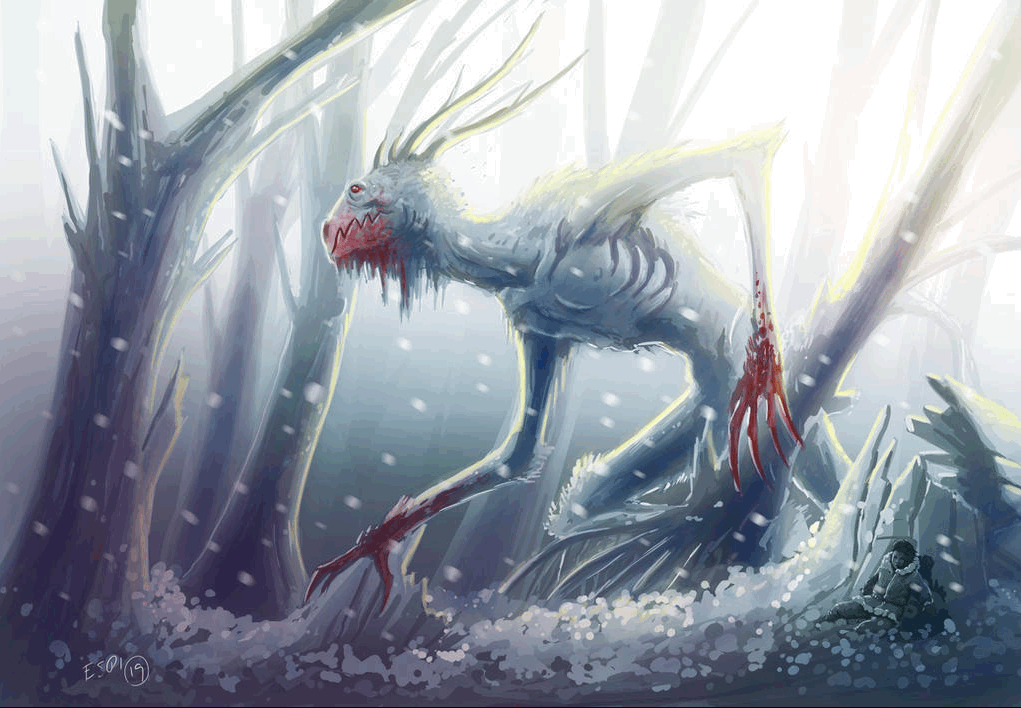
The Role of Wendigo in Ecological and Psychoanalytical Debates
In an era of climate crisis and overconsumption, the Wendigo offers a stark warning from the past. It tells us that the consequences of our actions can lead to self-destruction, much like the Wendigo. This ancient legend resonates with current global concerns, serving as a haunting reminder of what could befall our society. The monster’s hunger symbolizes the importance of understanding boundaries, valuing nature, and living in balance with the environment.
Lessons from the Wendigo Stories for Today
The wendigo reminds us that folklore can be more than entertainment; it carries wisdom. Despite cultural shifts, the message inherent in wendigo mythology remains pertinent. It encourages us to reflect on our behaviour, our values, and the impact of our choices.
These stories prompt us to consider how we might avoid the metaphorical transformation into wendigos in our own lives. We can live in a balanced way by following these old stories. Additionally, we can be mindful of what we consume. Lastly, we can show respect for the world.

Conclusion: The Ongoing Legacy of the Wendigo
In closing, the wendigo is more than a chilling figure from North American folklore. It is a complex symbol that reflects humanity’s deepest fears and challenges. The scary creature and its never-ending hunger symbolize the bad outcomes of being too greedy and selfish. In contemporary society, the Wendigo myth offers a lens through which we can examine our own actions and their impact.
The Wendigo still inspires different media, but the lessons from the original legends are always relevant. These stories show how the past and present connect, teaching us to be moderate and value community. Whether seen as a cautionary tale or a creature of nightmares, the Wendigo legend undeniably holds a significant place in the annals of myth and culture.
In sum, the story of the wendigo may evolve with each retelling, but its essence persists. It encourages self-reflection and responsible interaction with the world while avoiding excessive desires. The Wendigo legend is important, reminding us that ancient spirits still have much to teach us.
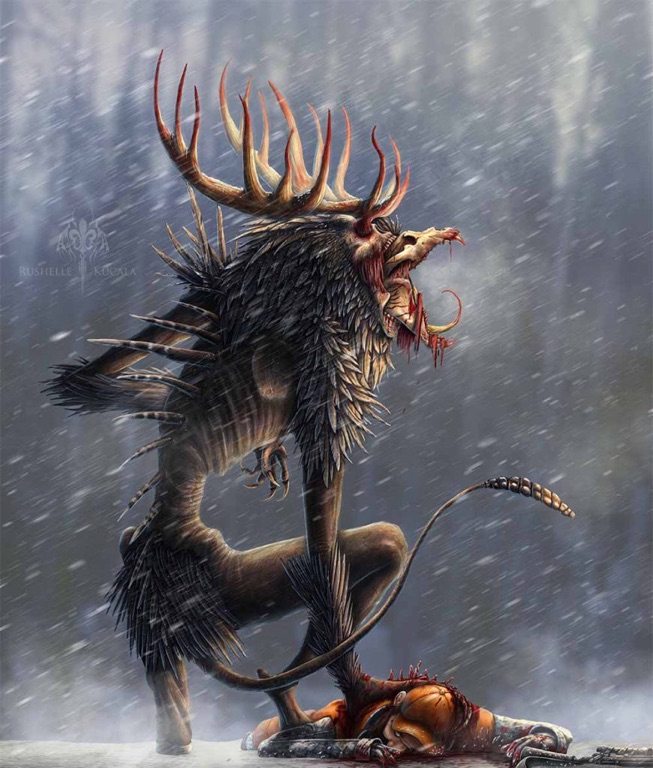
For further reading and to validate the information presented in this article, the following sources are recommended:
Wendigo FAQ’s
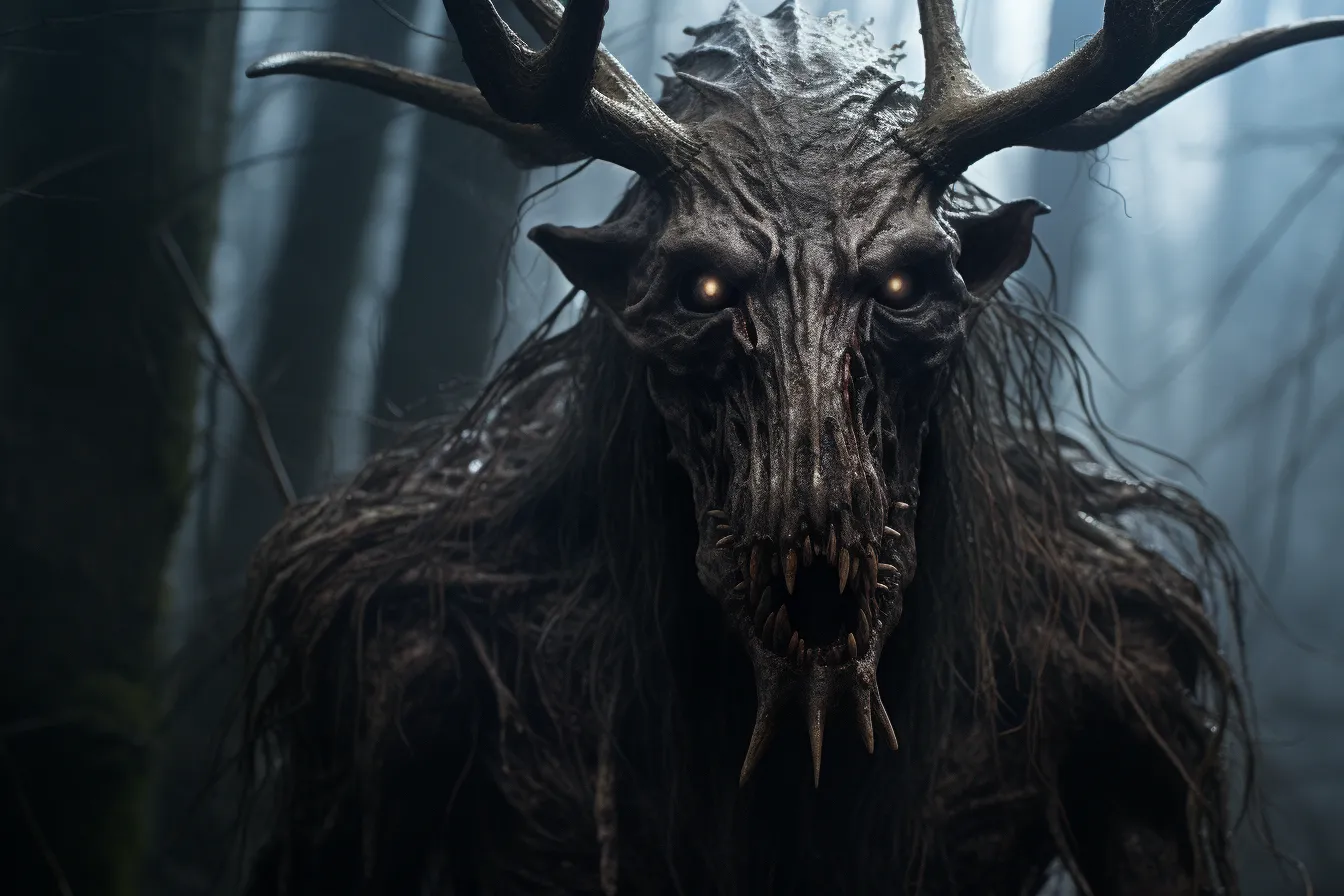
Where do Wendigos live?
Wendigos are mythical creatures stemming from the folklore of various Indigenous peoples of the North American Great Lakes region and the northeastern United States, particularly among Algonquian-speaking tribes. They are said to inhabit the forests of the coldest areas where winter is harsh and unforgiving, often associated with places of deep snow, extreme cold, and desolation.
What does the actual Wendigo look like?
Wendigos are creatures from Algonquian folklore, often described as terrifying, cannibalistic beings associated with cold, hunger, and winter. The descriptions of their appearance can vary, but common characteristics include:
- Emaciated Body: Wendigos are typically depicted as extremely thin and gaunt, with skin that appears tight over their bones, emphasizing their skeletal frame.
- Decaying Flesh: Their skin is often described as grayish and decaying, sometimes with an ashen or deathly pallor. Some descriptions include patches of missing skin or festering wounds.
- Deer-Like Features: Many depictions include features reminiscent of a deer, such as antlers or a deer-like skull, adding to their eerie and unnatural appearance.
- Glowing Eyes: Wendigos are often said to have glowing eyes, which can be red or yellow, contributing to their haunting presence.
- Sharp Claws and Teeth: They possess long, sharp claws and teeth, which they use to hunt and devour their prey.
- Tall and Lanky: Wendigos are generally described as tall and lanky, often towering over human beings, which makes them even more imposing and frightening.
- Rancid Odor: Although not a visual characteristic, wendigos are said to emit a foul odor of decay and corruption, which adds to their horrifying nature.
These characteristics combine to create a terrifying image of a creature that embodies hunger, decay, and the coldness of winter.
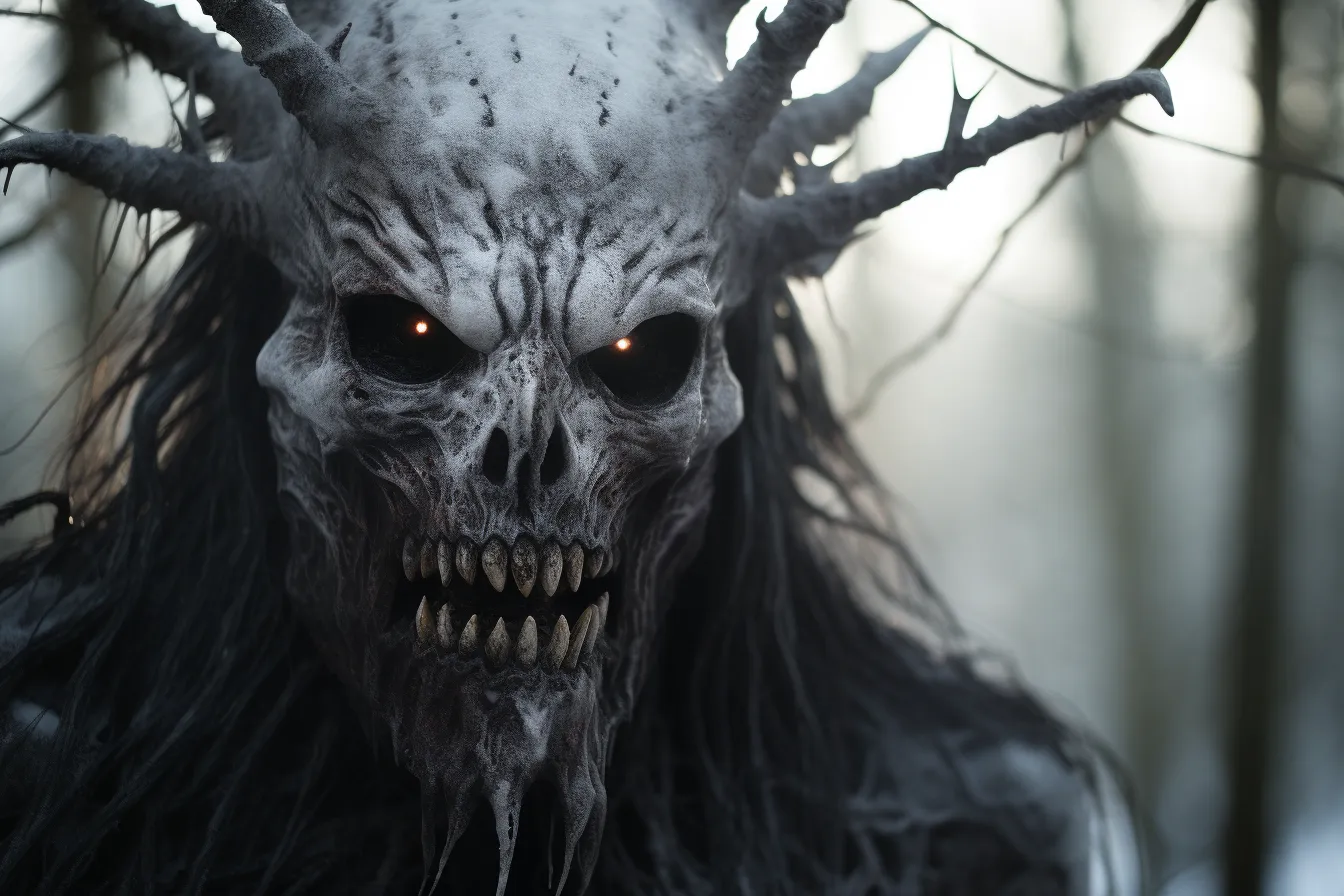
What makes a Wendigo a monster?
A Wendigo is considered a monster due to its insatiable hunger for human flesh and its association with cannibalism, greed, and excess. The transformation into a Wendigo is often seen as a punishment for taboo behaviors such as cannibalism. Once transformed, a Wendigo becomes a predatory entity, losing any sense of humanity it once had, and is driven by an endless desire to consume.
What does a Wendigo eat?
A Wendigo primarily feeds on human flesh. Its hunger is described as insatiable, growing with every meal it consumes, which only drives it to hunt and eat more. This endless hunger is a key aspect of the Wendigo’s curse, making it a perpetual predator of humans.
What defeats a Wendigo?
Defeating a Wendigo is said to be extremely difficult. In some stories, only a shaman or someone with extensive knowledge of spiritual and supernatural forces can confront and possibly defeat a Wendigo. Methods of defeat mentioned in folklore include melting the creature’s heart of ice with a fire, engaging in spiritual warfare, or using specific enchanted weapons. In some tales, decapitation or complete destruction of the body is necessary to ensure it does not return.
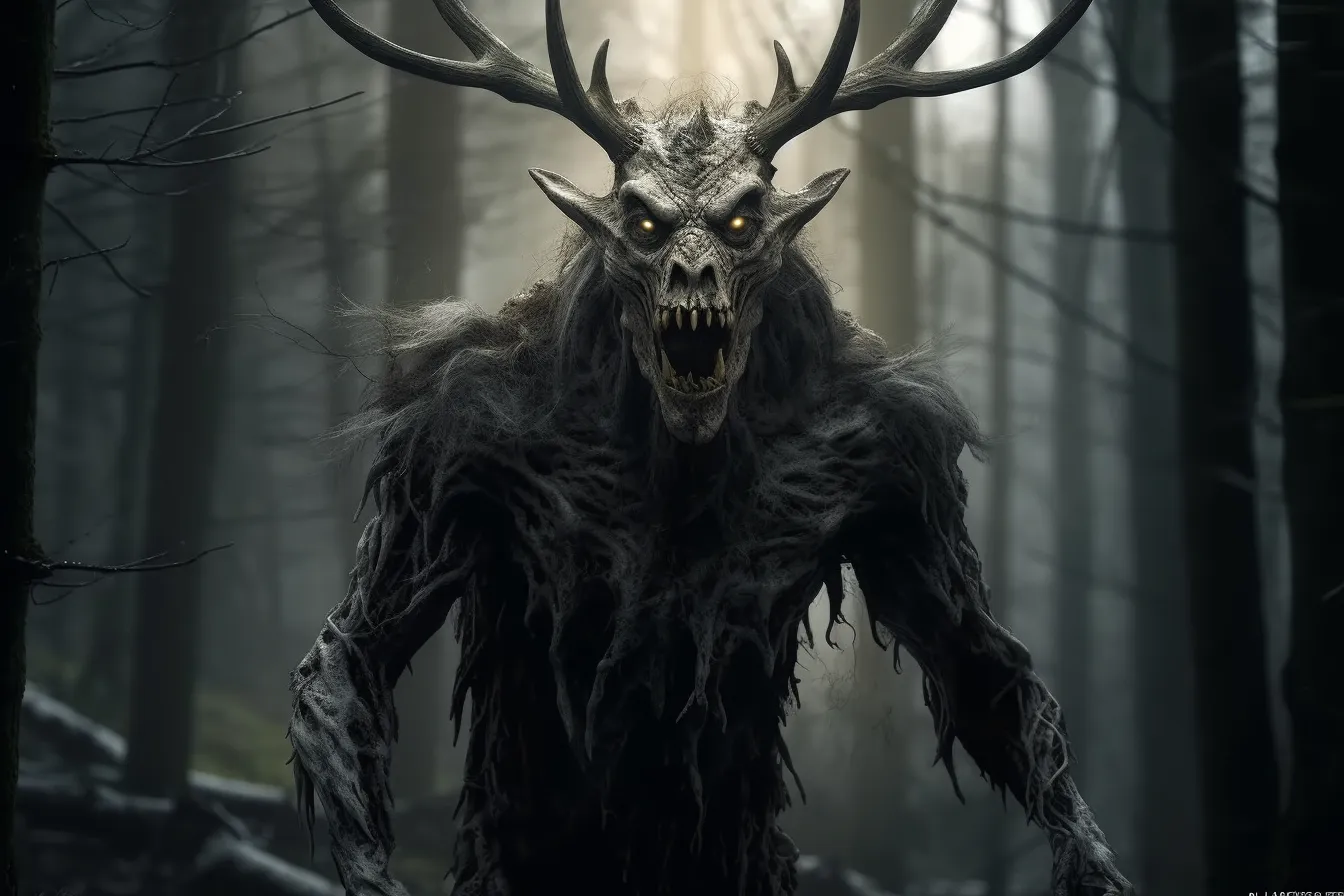
What is the Wendigo fear?
Wendigos, being embodiments of gluttony and excess, do not have many fears attributed to them in folklore. However, they are often countered by spiritual means, suggesting they may fear spiritual power, sacred rituals, or objects. Their existence as cursed beings might also imply a fear or aversion to anything that could potentially end their curse, such as specific rituals or enchanted weapons.
How to counter Wendigo?
Countering a Wendigo typically involves spiritual or supernatural means. This can include enlisting the help of a shaman or a person skilled in dealing with spiritual entities, performing specific rituals, or using charms and amulets. Knowledge of the Wendigo’s weaknesses, such as its heart of ice, can also be crucial in countering this creature.

What are Wendigos immune to?
Wendigos are often portrayed as being immune to conventional weapons and physical harm, making them formidable opponents. Their supernatural origins and powers mean that ordinary means of defense are usually ineffective. This immunity reinforces the need for spiritual or enchanted means to deal with them effectively.
These FAQs provide a basic understanding of Wendigos as depicted in folklore and myth. It’s important to remember that interpretations and descriptions can vary between cultures and sources.

